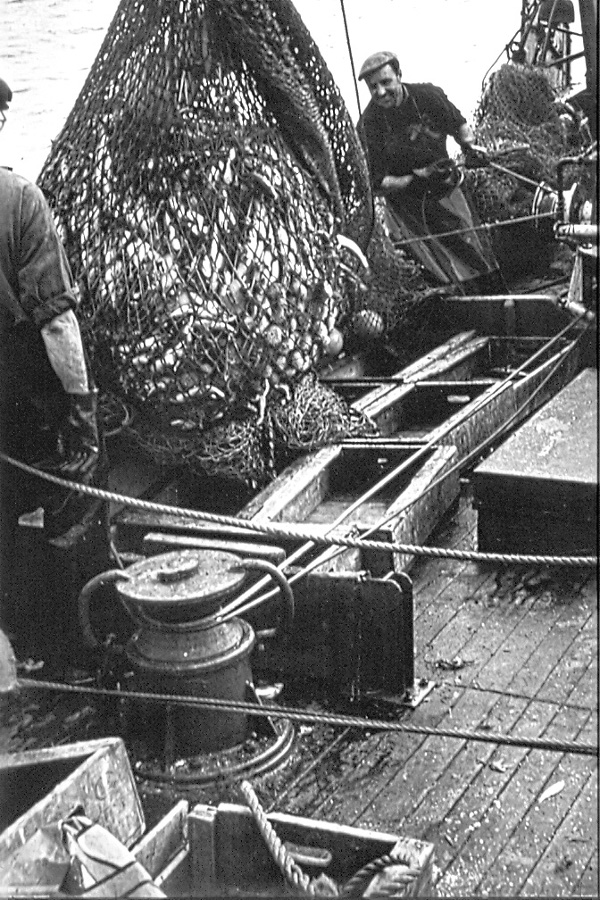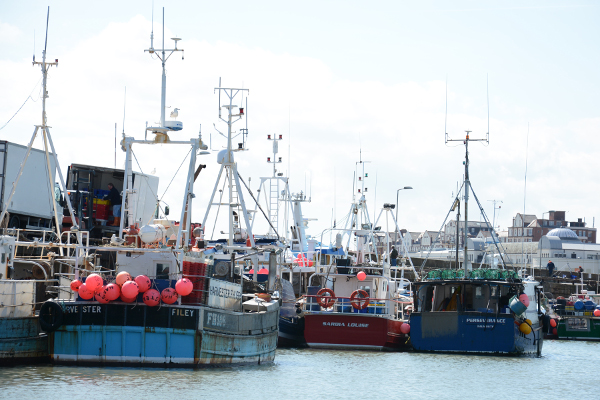

Fishing is Bridlington's oldest continuous commercial activity with fragmented references tracing it back to the Middle Ages. Later, as references fishing become more common, we hear that a local coble working in the bay landed a 22 ½ ft fish in 1667.
By the eighteenth century century line fishing for haddock and cod and other species had become an important activity for fishermen on this coast both inshore and further afield with the catches of fresh fish being traded across the East Riding, Hull, York and into West Yorkshire whilst dried salt cod was sold on to merchants who traded with Spain and the Mediterranean region.

Several methods of capture have been used over the years to take fish, most notably line fishing, drift netting, trawling and potting, with fishermen changing methods according to season and the types of fish they sought. In the twentieth century at one time they went trawling from March to October, line-fishing October to March and potting March to June. Other vessels, including those owned by visiting fishermen, went drift netting during the once abundant herring seasons.
In the early twentieth century the industry was revolutionised by the fitting of engines which replaced the sails and oars as the main means of propulsion in the catching sector and by 1915 there were 25 motorised vessels line fishing from the harbour. Trawling from motorised vessels in the Bay was allowed from 1918 but over the ensuing years the rise in activity produced a scarcity of fish causing considerable under employment within the industry.
The gradual abandonment of line fishing in favour of trawling beyond the bay using keel boats led to an increase in landings following the Second World War and helped the industry thrive over the next forty years until, as is often the case in a cyclical industry, declining fish stocks, increased legislation, together with an aging workforce and fleet meant that a new direction was needed to preserve the local industry.
The Bridlington Bay area has abundant stocks of lobster and crab so during the 1990s the fishermen adapted their operations to focus on shellfish. The rise of the industry over the last twenty years, and a programme of continued improvement and investment by the fishermen, has ensured that the fishery is both sustainable and the catches of the highest quality. Bridlington is now one of Europe’s premier shellfish ports. Landings here are valued at £7m per year, local catches, particularly the lobsters, are in great demand, especially on the plates of diners in mainland Europe.

All historical photos © Fred Walkington MBE
Contemporary fishing photos © Holderness Coast FLAG